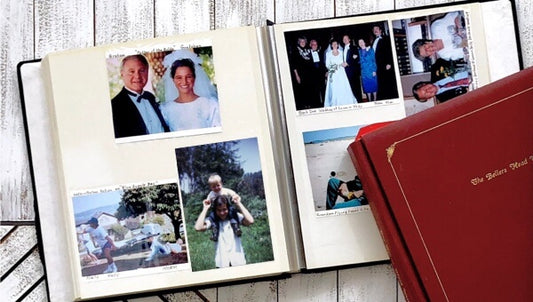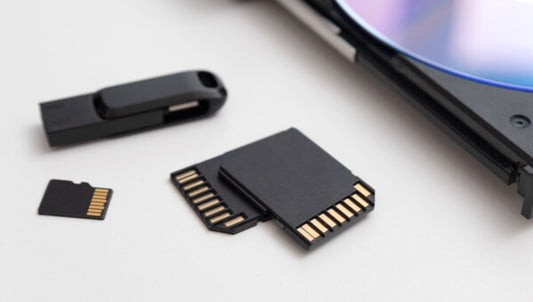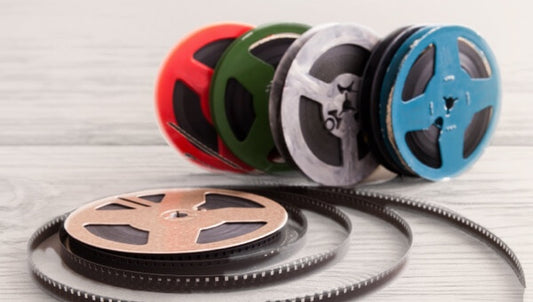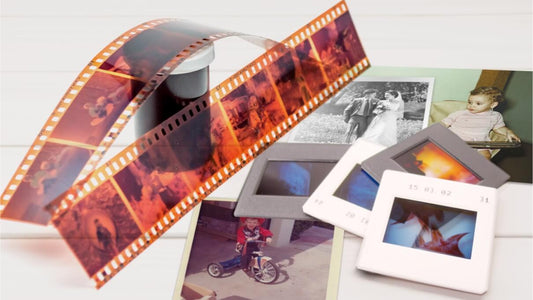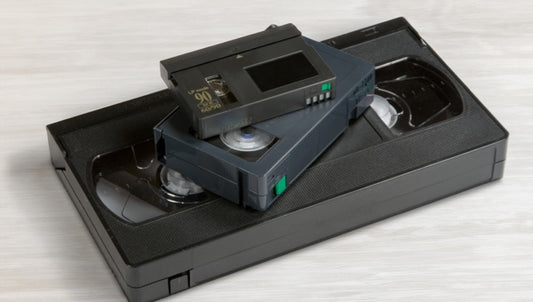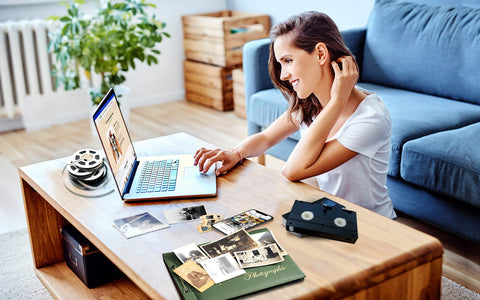These days, we can capture videos from our smartphones and post them online any time we want, but have you ever wondered, “When was the first video recorded?” From original recordings in the late 19th century to today, the history of film, video, and motion pictures is fascinating.
Capture archival experts don’t only preserve memories for families (over 12 million and counting), but strive to preserve the history of analog and digital media. That’s why we put together this complete history of video recording.
Keep reading to learn about the first recorded moving images, early video recording devices, and the development of video technology through the years that allows us all to capture our most precious memories.
Jump to:
- When was the first video ever recorded?
- Origins of Video Recording
- Unveiling the First Video Recording
- Pioneers and Innovators
- Cultural and Technological Implications
- Future Trends in Video Recording
- Conclusion
When was the first video ever recorded?

Some consider “The Horse in Motion” from 1878 the first video, while others consider 1888’s “The Roundhay Garden Scene” the first true video recording.
These two “first” instances of motion picture video would lead to more breakthroughs throughout the following years and decades leading all the way to the digital video cameras we use today.
Here’s a timeline of the major milestones in video recording:

Origins of Video Recording

To go to the origins of video recording, it’s important to understand what we truly mean by “video.” According to the Wikipedia definition, video is an electronic medium for recording, copying, playback, broadcasting, and displaying moving visual media.
However, if you go back to the original moving picture devices you can trace the progression and evolution of video through film, videotapes, and all the way to the social media age. If you do that, then you can go back to before the motion was added to still photographs.
For example, the stroboscope was used for animation in the early 1800s. It used rotating cogs to develop an illusion of motion on a spinning disc. Later, flipbooks and stop motion concepts were used to imitate motion.
During the early to mid-1800s, there were several similar devices that would spin or move to create a motion picture effect. One created by American engineer Coleman Sellers II in 1861 was known as the kinetoscope. This device would use stereoscopic pictures on glass plates to make them represent objects in motion.
Then, in 1870, Philadelphia engineer Henry Renno Heyl presented three moving picture scenes with a Phasmatrope to 1500 people at a church entertainment event. Each scene was projected from a rotating disk with 16 photographic images. It was also accompanied by music.
Combined with advancements in photographic technology, these groundbreaking devices led to the moment of the first video recording.
Unveiling the First Video Recording

While there were earlier attempts, many consider “The Horse in Motion” the first known video to ever be recorded successfully. This series of cabinet cards showed a series of automatic electro-photographs to mimic the movement of a horse. Shot in June of 1878, this is the first instance of chronophotography.
However, others refer to the oldest surviving film as the first video, including the Guinness Book of World Records. This film is the “Roundhay Garden Scene” and is a brief, 2-second motion picture that shows people walking and dancing in a circle in Roundhay, Leeds in northern England. It was captured by French inventor Louis Le Prince in 12 frames using his single-lens camera and Eastman Kodak paper-based film.
Pretty soon, these inventions led to later pioneers of video recording including Thomas Edison who would assist William Kennedy Dickson to create the Kinetoscope in 1891. This device uses strips of perforated film to display moving pictures through a peephole.
While still quite unlike video as we know it, these three “firsts” were the true beginning of video as we know it today.
Pioneers and Innovators

Since these original videos, there have been several pioneers and innovators that are critical to the evolution of video. First, the Lumiere brothers would screen the first commercial movie in 1895 using their camera projector called the Cinematographe. The film was screened at the Grand Café in Paris and was built upon the Edison Company’s technology but made it easier to use.
In 1926, John Logie Baird demonstrated the world’s first live working television system. Then, a year later in 1927, “The Jazz Singer” became the first feature-length film with synchronized dialogue. This spelled the end of the silent film era and meant that videos would generally have sound.
Pretty soon, television broadcasts were available nationwide with the first color TV being released in 1954. However, most families were still unable to record their own videos. While 16 mm film and 8 mm film were available, the introduction of the Super 8 camera in 1965 made it more convenient and affordable to capture home movies.
This led to other film playback and recording devices as well, but videotape was on the horizon. In 1976, JVC unleashed VHS and Sony soon released its competitor Betamax. These videotape formats made it easier than ever before to view videos at home and record videos using camcorders. Over the next decade, more compact camcorders and videotapes were developed, which led to the digital age.
In 1984, the Eastman Kodak Company of New York announced Digital8, a groundbreaking digital video recording format. Around the same time, many companies started to use Sony’s charge-coupled device video camera technology to produce higher image quality, higher pixel count, more vivid colors, and more sensitivity to movement.
Then, in 1997, the DVD was invented, and Netflix was founded. This was the dawn of the digital video revolution and the first step toward video streaming, social media sharing, and easy access to videos that we use today. Within a few years came camera phones, which developed into video phones and smartphones like the Apple iPhone.
Now, we can use our phones to view, capture, and share movies, videos, pictures, and more. Now, there are more videos viewed and recorded than ever before, but you can trace the evolution back to when was the first video recorded.
Cultural and Technological Implications

The first video recording quickly led to video screenings. It seems like people always enjoyed sharing videos with others, but the influence of the first video recording device sent ripples throughout culture and entertainment.
Videos gave rise to motion pictures starting with early theatrical films and leading to all the movies that were released this year. It also contributed to television broadcasting and other TV shows that we’ve watched throughout the decades.
In fact, the invention of video recording likely influences our lives on a day-to-day basis. Whether we are using video streaming apps like Netflix or Amazon Prime, meeting using video calling applications like Zoom or Skype, watching television online or with traditional broadcasting methods, or capturing our most precious memories, we have the earliest video footage to thank.
But there are other uses of video recording as well. Videos can be used for security and surveillance to keep our property safe. Additionally, it’s used in journalism and reporting to capture real-life events as they happen, which leads to a clear record of historical events that weren’t available in past decades or centuries.
Future Trends in Video Recording

From the first video to the first movie camera and into digital technology, there have been countless milestones in the evolution of video recording. So, what will emerge in the next years and decades?
Video quality will likely continue to improve to higher resolutions and more realistic depictions of the images we capture. In addition, the rise of VR makes it seem likely that live video could be used for video gaming as well as for scientific purposes.
In fact, we already use video in healthcare for surgical applications and patient monitoring. This use of video is likely to increase as it becomes more trustworthy. In addition, videos could add sensors to check temperature, heart rate, and other signs for a safer, more technologically supported treatment.
Some experts believe that videos will be able to use AI in the future to create personalized experiences. For example, a movie may appear differently to you than it would to me because cameras will use our eyes, facial recognition, and expressions to cultivate a customized video.
While it’s impossible to know exactly what will happen in 15, 25, or 50 years, it’s clear that video is here to stay.
Conclusion
The first videos of the late 1800s may have only been a few seconds long and depicted seemingly meaningless events, but that original invention has led to technological advancements that now influence culture, science, history, and our daily lives.
Plus, it’s made it much easier for us to capture our most precious memories like graduations, weddings, family gatherings, and more. If you want to make sure those videos are preserved in the timeline of video history, Capture can preserve them as high-quality digital copies. Click here to learn more!





